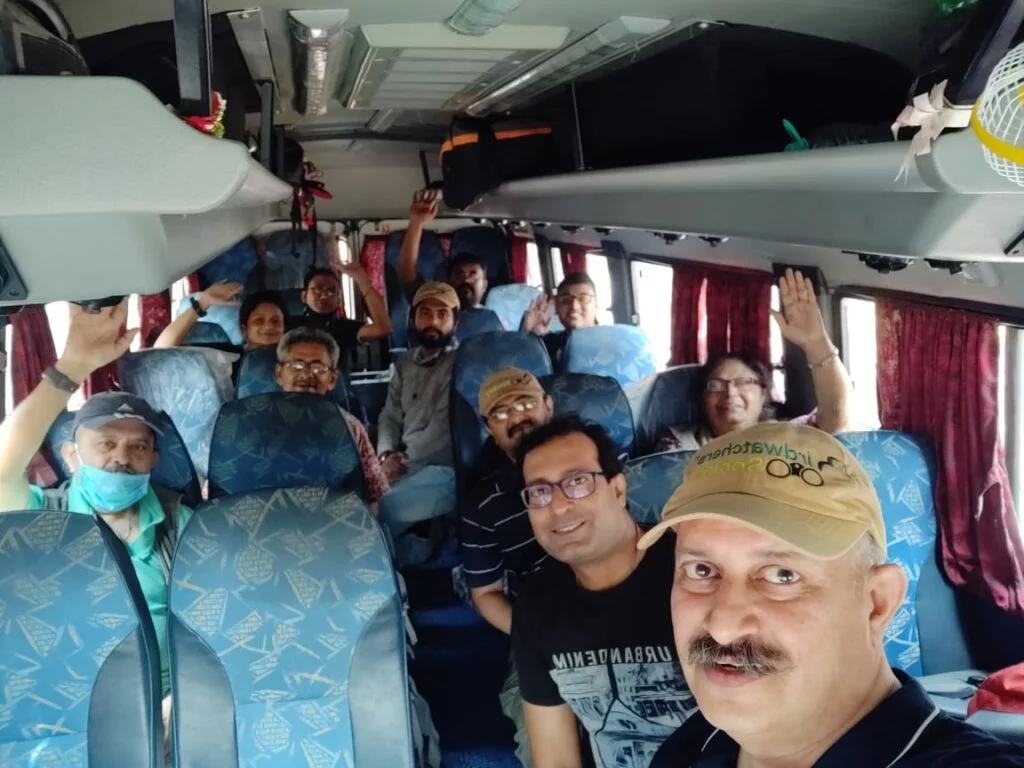Trip Report
In search of … the careless vagabonds of the sea.
On 03, April 2021, a team of 16 birders of Birdwatcher’s Society (BWS) took to the sea in pursuit of pelagic birds off Bakhali coast into the Bay of Bengal. The first such expedition in the Bay of Bengal was conducted by BWS in Dec 2020. That too was a two-day exploration.
Bay of Bengal forms a large marine ecosystem, empowered by the tributaries of the largest delta of the planet. Major rivers like the Ganges, Brahmaputra, Mahanadi, Godavari, Krishna and Cauvery discharge millions of litres of water per day into the Bay of Bengal. This marine ecosystem stretches from West Bengal and extends till the southernmost point in Tamil Nadu which is nearly 50% of India’s coastline. In spite of its vastness, the Bay of Bengal has remained data deficient since very few detailed surveys have been conducted in the past. Over the years pelagic bird data have been useful to study the structural and functional changes in marine eco systems. BWS has been trying to contribute to the scientific pursuits,
through its initiatives, to unravel the mystery of the Bay.
The pelagic birds are rarely seen as they do not venture towards the land except for breeding. Consequently they are amongst the most poorly known birds, as not only are they difficult to find, much less follow and observe in the vastness of the open ocean. They do sometime get blown into the landmass by storms & cyclones. During the cyclone Phani, Bulbul and Amphan few birds were rescued from places such as Rajarhat, Dankuni and Midnapore.
Dr Anirban Bhaduri (BWS Member) photographed, from his terrace, a Great Frigatebird (Fregata minor) blown towards Rajarhat during cyclone Amphan in May 2020. Few more observations were reported post Amphan from Hooghly as well. Great Frigatebirds also known as Man o’-war birds, have an ill-deserved reputation as full-time pirates because they are often seen chasing other seabird species, particularly boobies, to commandeer a meal. Apart from Kolkata similar sightings, in India, have been reported from the coastal regions of Tamil Nadu & Kerala.


Great Frigatebird (Fregata minor) – (IUCN – Least concern): A large black seabird that holds its wings in a distinctive crook. The long, forked tail may appear pointed when folded. Males are all black with a red throat pouch. Females have a white breast. Immatures have a white head and breast. Found in Indian Ocean, Indonesian Seas, South China Sea. Main food flying fish and squid. Pic credit: Dr Anirban Bhaduri – Sanjeevani Gardens, 21-22 May 2020
The 16 members of the BWS team consisted of young and old, the wise and bold, the witty and the nutty, also the sporty and the hefty (sic). Led by Major B Parihar the team embarked on its journey in the not so early hours of 03April. Breakfast was served on the move, a much sought tea stop and hygiene break at Diamond Harbour enroute to destination. Arriving just in time for the much sought after lunch at Banashree, Bakhali.

Maj Parihar capturing the smiles at the start of the trip

Maj Parihar with the team members
